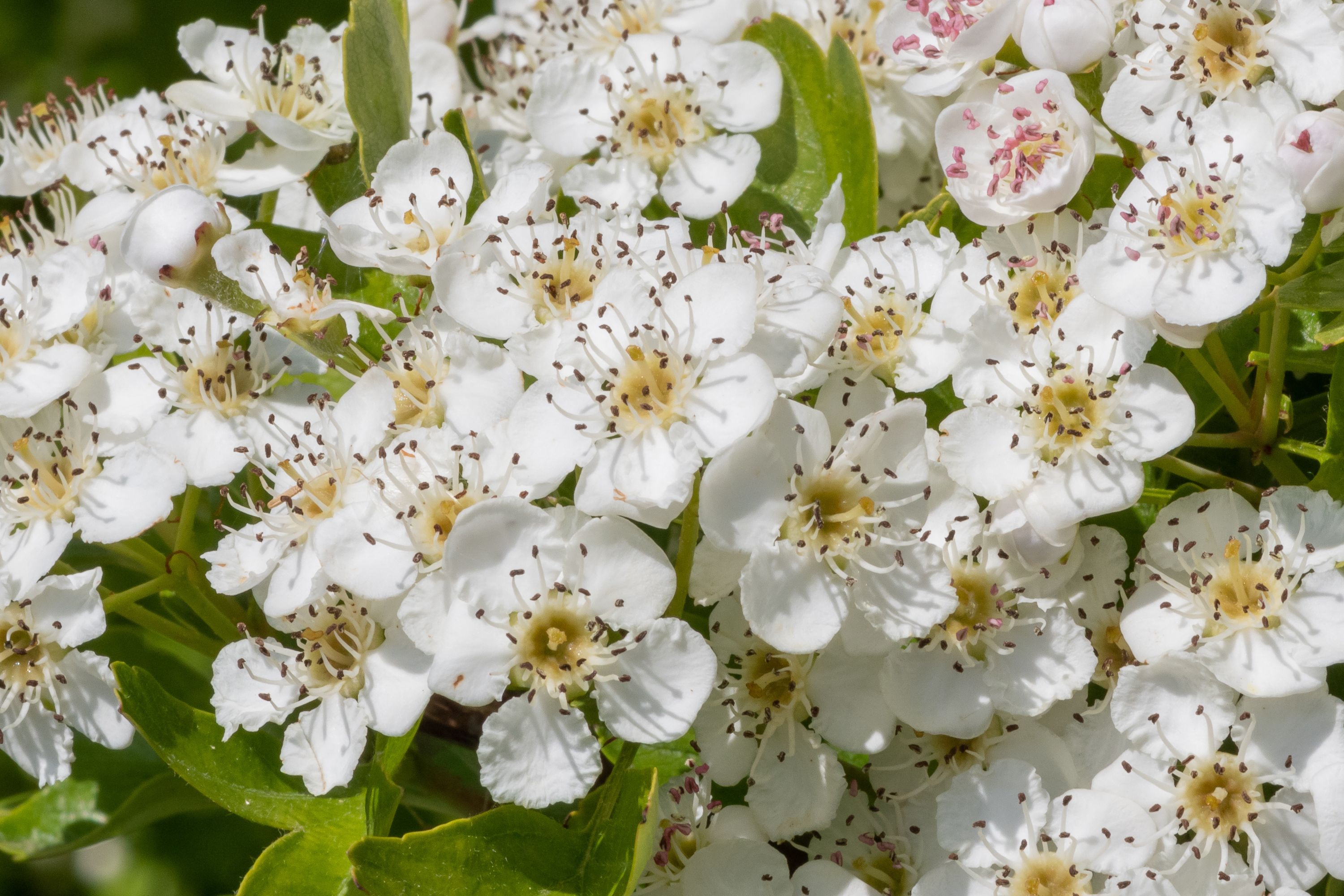Washington hawthorn
(Crataegus phaenopyrum)

Description
Crataegus phaenopyrum is a species of hawthorn commonly known as Washington hawthorn or Washington thorn. It is widely grown as an ornamental plant, and can reach 10 m (about 32 feet) in height. The small red berry-like fruit grow closely together in large clusters and are food for squirrels and birds. They have a mild flavor and can be eaten raw or cooked. As with other species of hawthorn, the wood is hard and can be used to make tools. The fruit is edible and can be made into jelly or crushed to make tea. Crataegus commonly called hawthorn, quickthorn, thornapple, May-tree, whitethorn, or hawberry, is a genus of several hundred species of shrubs and trees in the family Rosaceae, native to temperate regions of the Northern Hemisphere in Europe, Asia, North Africa, and North America. The name "hawthorn" was originally applied to the species native to northern Europe, especially the common hawthorn C. monogyna, and the unmodified name is often so used in Britain and Ireland. The name is now also applied to the entire genus and to the related Asian genus Rhaphiolepis. The generic epithet, Crataegus, is derived from the Greek kratos "strength" because of the great strength of the wood and akis "sharp", referring to the thorns of some species. The name haw, originally an Old English term for hedge (from the Anglo-Saxon term haguthorn, "a fence with thorns") also applies to the fruit. Crataegus species are shrubs or small trees, mostly growing to 5–15 m (15–50 ft) tall, with small pome fruit and (usually) thorny branches. The most common type of bark is smooth grey in young individuals, developing shallow longitudinal fissures with narrow ridges in older trees. The thorns are small sharp-tipped branches that arise either from other branches or from the trunk, and are typically 1–3 cm (1⁄2–1 in) long (recorded as up to 11.5 cm or 4+1⁄2 inches in one case). The leaves grow spirally arranged on long shoots, and in clusters on spur shoots on the branches or twigs. The leaves of most species have lobed or serrated margins and are somewhat variable in shape. The fruit, sometimes known as a "haw", is berry-like but structurally a pome containing from one to five pyrenes that resemble the "stones" of plums, peaches, etc., which are drupaceous fruit in the same subfamily.
Taxonomic tree:







